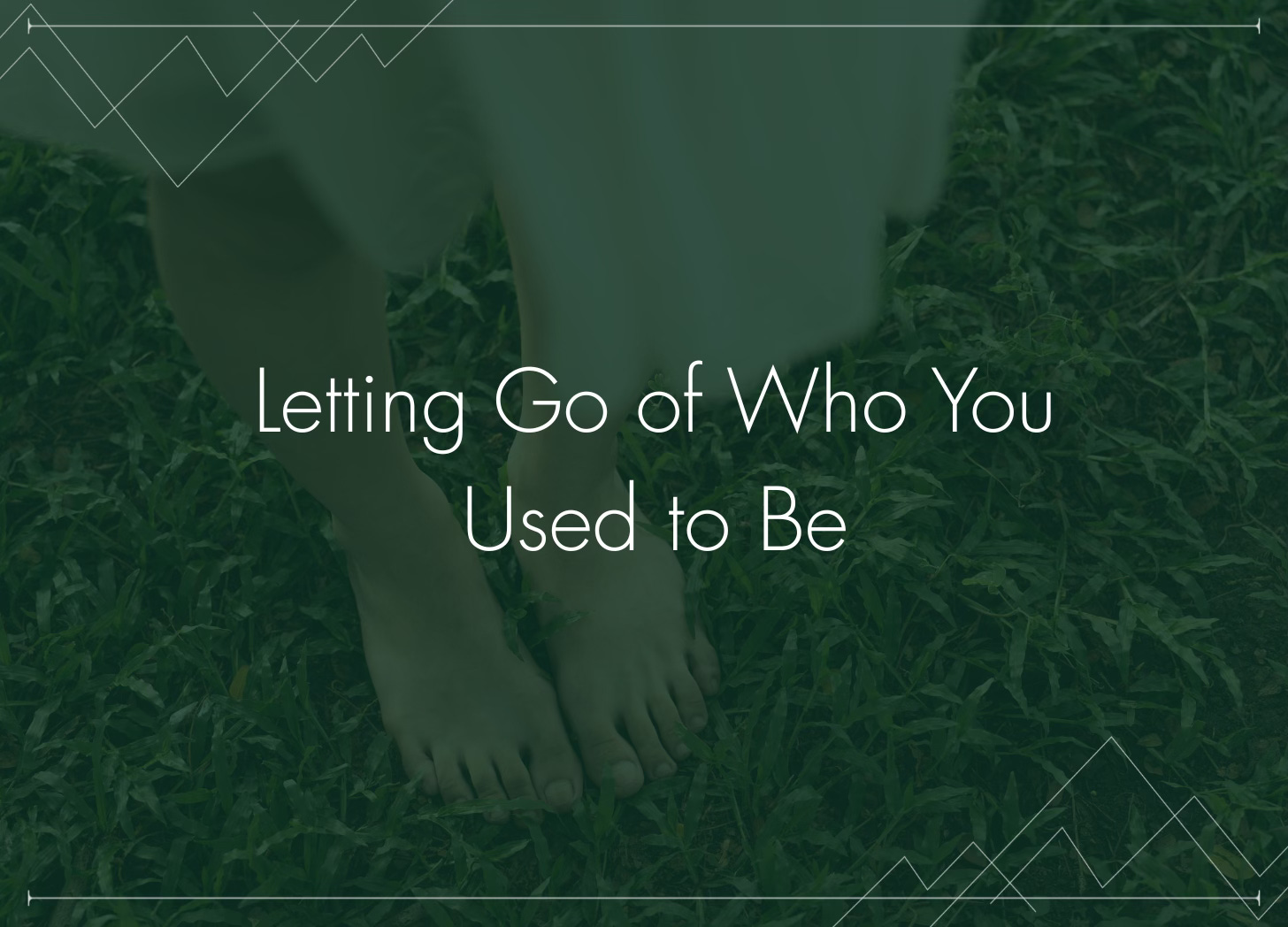Letting Go of Who You Used to Be
An exploration of identity: working through the evolution from who you used to be to who you're becoming
“You aren’t letting go of an experience, a person, or a place, but of all of the things you assumed you’d be, all of the things you made the the loss mean about you, all the feelings that have to slowly unravel themselves so as not to overwhelm you. This takes time, give that yourself.” - Brianne Wiest, The Pivot Year
I think the words we need to read or hear find us when we need them. I believe this as much as I believe that the people and opportunities we need find us at exactly the right time, and not a moment too soon.
This morning, I exploring the topic of letting go, something I find myself exploring several times a year, usually because I’m assessing the direction I’m going, and some course correction is needed. I was specifically exploring letting go of a past version of yourself that no longer exists. In the last few years, I've observed that many individuals I’ve worked with have desire to disconnect from past iterations of themselves — burdened by who they used to be or constrained by outdated self-perceptions.
The Characters We Play
I often contemplate the various roles we embody in others' narratives. Have you ever thought about this? The character you may represent in someone else's life story?
You might be cast as the antagonist in some narratives and the protagonist in others. The fascinating truth is that these characterizations reflect more about the narrator than about your authentic self.
The perceptual lens through which others view you is calibrated by their unique developmental experiences, belief systems, and personal history.
What some perceive as your vibrant enthusiasm, others might interpret as excessive.
What some experience as your emotional intelligence and vulnerability, others might view as strength that creates psychological safety.
Where some see assertiveness as self-centeredness, others recognize it as healthy boundary-setting and self-respect.
With time and reflection, I've come to see that these different perceptions exist all at once and don't actually define who I really am. I now carefully choose which opinions I let influence how I see myself. Instead of trying to control what others think, which I simply can't do, I've put that energy into being more intentional about what matters to me.
This shift in how I handle others' perceptions makes me wonder:
"Can you do the same for yourself when it comes to versions of yourself that you may no longer be?"
Permission to Let Go of Someone You Used to Be
This exercise is designed to help you look at who you've been and who you want to become. Take some time to journal about these questions:
Identify Limiting Beliefs: What's one belief about yourself that's keeping you stuck in an old identity? Where did it come from and how has it held you back?
What might happen if you let go of this belief? How could that create room for new ways of seeing yourself that feel more true to who you are now?
Look at Your Relationships: Think about a relationship in your life that keeps you tied to old beliefs or values. What's making it hard to change this connection?
How might shifting or letting go of this relationship help you build new connections that better match who you are today?
Imagine Life Without Regrets: Picture your life without carrying the weight of past mistakes and regrets. What would that feel like? What new possibilities might open up?
How would setting down this burden help you develop new perspectives that move you toward a more fulfilling life?
Picture Your Future Self: Visualize who you want to become - someone not held back by old patterns or attachments. What specific steps could you take today to let go of what's no longer helping you grow?
How would becoming this future version of yourself allow you to develop values and practices that better reflect your authentic self?
It's Okay to Let Go
As we reach midlife, many of us experience a deeper awakening. This time brings both freedom and challenges—moments of joy and clarity alongside pain and unprocessed emotions.
During this phase, it becomes important to look at the identities we've carried and the values we've held. This means recognizing how our goals and desires have changed, letting go of outdated ideas about who we should be, and embracing who we're actually becoming.
Growing as a person naturally means letting go of old identities to make space for new perspectives, passions, and priorities. When we approach this change with kindness toward ourselves, we can honor our journey, build resilience, and move toward a future that reflects our true values, grounded in the wisdom we've gained along the way.
Recognize that letting go of previous versions of yourself shows emotional intelligence and adaptability rather than weakness. Each of us navigates unique experiences that shape who we are, yet our capacity for growth remains boundless.
By loosening our grip on outdated self-concepts and embracing how our values, needs, and identities change over time, we make room for deeper self-awareness and fulfillment.
This journey doesn't require erasure of your past but rather an integration that honors previous chapters while confidently stepping into the unknown, guided by the wisdom accumulated throughout your life. Remember, it's not only acceptable but necessary to evolve, redefine, and embrace the continuous unfolding of your authentic self.


